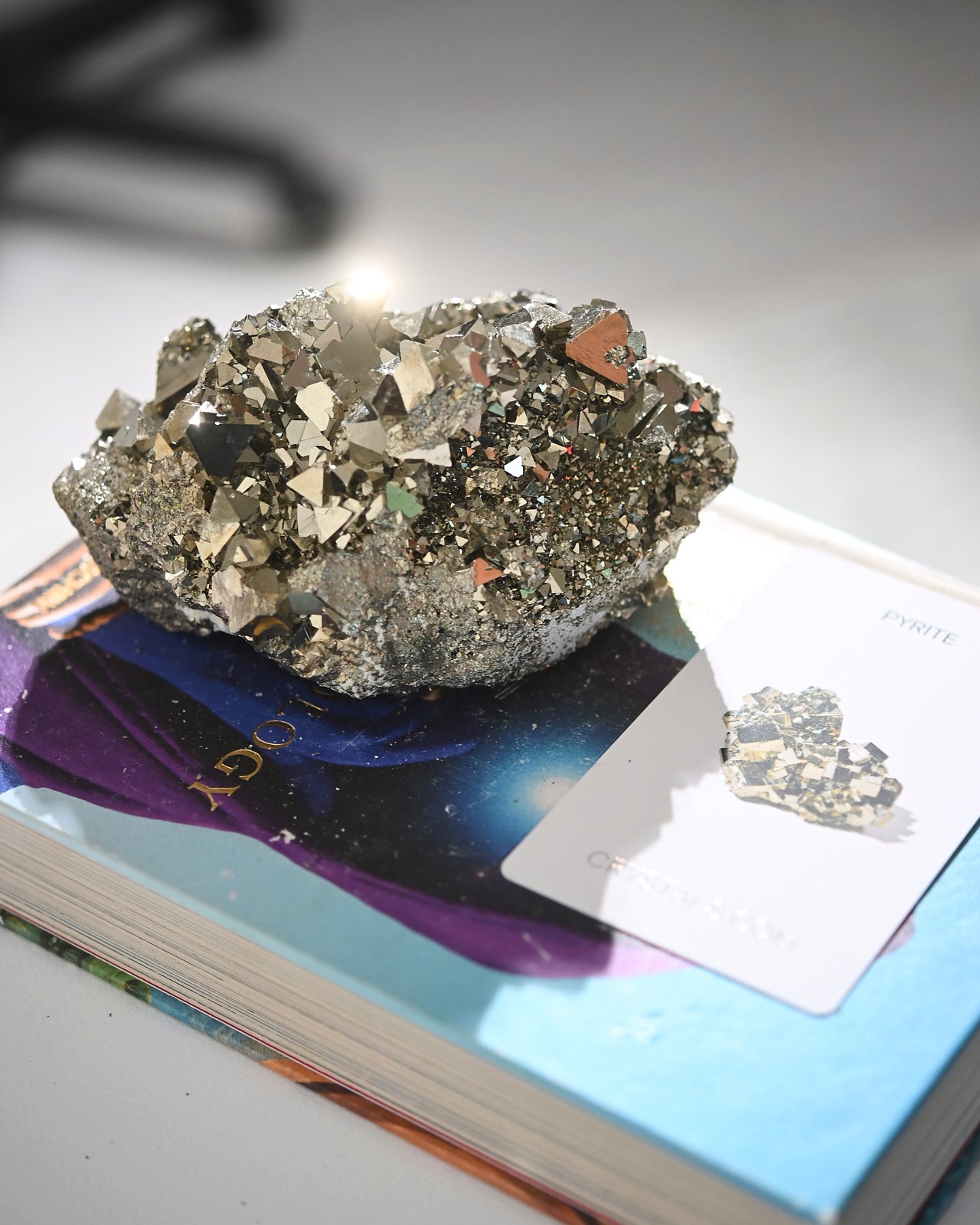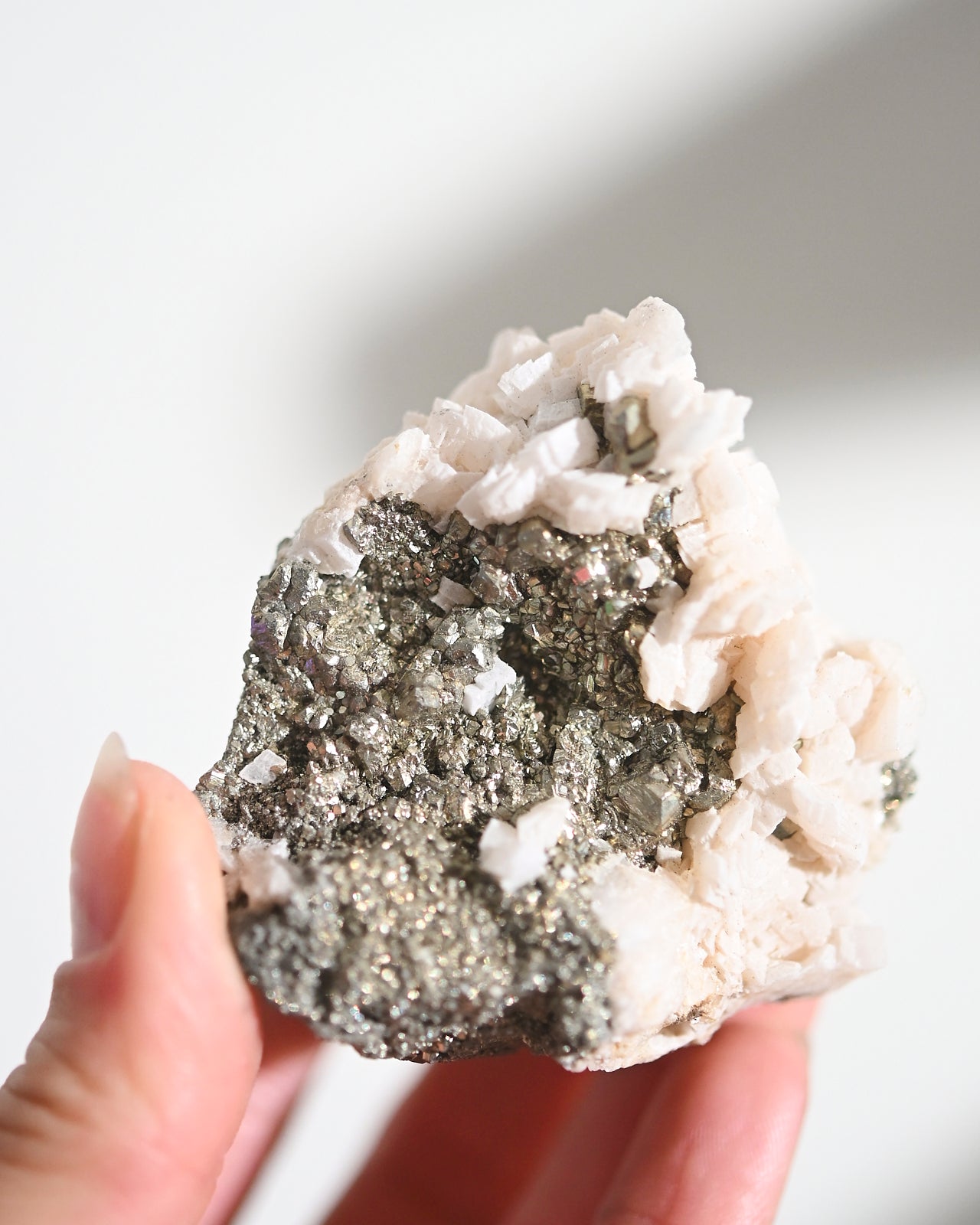Every piece is hand-selected and documented in-house for true representation.
Each crystal is intentionally hand-selected and photographed in-house — the piece you see is the piece you receive.

From the copper-rich Andes to the desert coast, Peru is a land of vivid mineral color and ancient Earth energy. Known for its vibrant Blue Opal, radiant Chrysocolla, and mirror-bright Pyrite, this region produces some of the world’s most visually striking crystals, each piece a reflection of Peru’s deep volcanic and geological past.





Located in the Huallanca District of Ancash, the Huanzala Mine is one of the world’s most prolific sources of Pyrite and Sphalerite specimens. Its mirror-bright cubic Pyrite crystals are globally recognized for their perfection and metallic luster — a collector’s benchmark since the 1960s.

High in the Andes, Junín is home to Rhodonite and Galena deposits formed in zinc-rich hydrothermal veins. This historic mining province has produced museum-grade specimens treasured for their vibrant pink and silver contrasts.

Neighboring Junín, the Pasco region hosts mines yielding Chrysocolla, Malachite, and Azurite — minerals born from ancient copper deposits that color the Andes with vivid turquoise and green hues.

One of Peru’s key silver-producing areas, Uchucchacua Mine is also known for rare Rhodonite, Calcite, and Manganese minerals, showcasing Peru’s geological diversity.




Data sourced from field gemologists and GIA mineral records.
| Mineral | Formula | Hardness | Color | Birthstone |
|---|---|---|---|---|
| Amethyst Show more |
SiO₂
SiO₂ is silicon dioxide (Quartz)
|
7 | Purple | February |
| Citrine Show more |
SiO₂
SiO₂ is silicon dioxide (Quartz)
|
7 | Yellow |
November
Preview
|
| Tourmaline Show more |
Complex
Complex borosilicate mineral
|
7-7.5 | Pink | October |
| Clear Quartz Show more |
SiO₂
SiO₂ is silicon dioxide (Quartz)
|
7 | Clear | April |
| Aquamarine Show more |
Be₃Al₂Si₆O₁₈
Beryllium aluminum silicate
|
7.5-8 | Blue-Green |
March
Preview
|
| Emerald Show more |
Be₃Al₂Si₆O₁₈
Beryllium aluminum silicate
|
7.5-8 | Green |
May
Preview
|
Peruvian Crystals
Crystals sourced from Peru
Founder’s Note
Every crystal begins as an encounter shaped by time and human touch. I personally source each piece, working closely with miners and artisans who handle them with care.
As a photographer and lifelong lover of design, I’m drawn to light, color, and form, the same elements that make crystals feel like natural works of art.
Each piece is photographed in natural light to honor its true texture and energy, a quiet balance of beauty, material, and meaning.
Brittany Roughton
Founder & Curator, Crystals.com

Authenticity, ethics, and craft — visualized as energy, intention, and creation.
Every piece is hand-selected and documented in-house for true representation.
Each crystal is intentionally hand-selected and photographed in-house — the piece you see is the piece you receive.
Shot in natural light — color & form are true.
What you see is what you’ll receive — every piece is photographed in natural light for accurate color, form, and detail.
Long-term relationships that honor people & planet.
We work through long-term, responsible partnerships that respect people and planet — never mass-produced or enhanced.
Recognized for rare, one-of-a-kind natural specimens.
Recognized by designers & collectors for rare, one-of-a-kind natural mineral specimens and refined curation.
A living archive of crystal meanings, origins, and care rituals — your guide to understanding the stones you bring home.
Explore the Encyclopedia →The stone most closely associated with Peru is the distinctive “Peruvian Opal” (both blue and pink varieties) found in the Andes.
While very rare, the blue-green variety of Andean (Peruvian) Opal is almost exclusively found in one region of Peru’s Andes.
The national stone of Peru is commonly cited as Peruvian Opal.
Gently rinse under cool running water and allow to air dry. Avoid using harsh chemicals or saltwater, especially for softer minerals like selenite or malachite. Regular cleansing helps restore their natural brilliance.
Unlike precious opals with flashy “play-of-color”, Peruvian Opal is often opaque to translucent, with its subtle color derived from trace elements like copper rather than light diffraction.